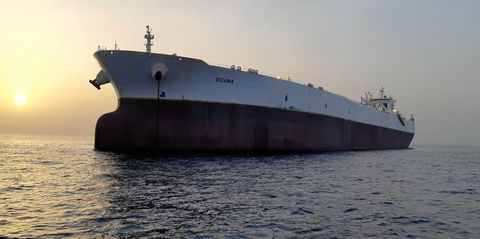US-flag operator Overseas Shipholding Group (OSG) is putting its Alaskan fleet fully back together again with the purchase of the a suezmax tanker from BP.
The Tampa, Florida-based company did not break out the purchase price of the 193,000-dwt Alaskan Frontier (built 2004), which had been in cold lay-up since 2019.
But chief executive Sam Norton said on Thursday that its total capital commitment, including the cost of engine upgrades and ballast water treatment installation, would approach $50m.
“The purchase of the Alaskan Frontier brings all four of the Alaskan class crude oil tankers under OSG’s ownership at a time when the prospect for expanded crude oil production in Alaska offers great promise for continued and increasing demand for ships of her type,” he said.
“Upon completion of shipyard work, which will include life-cycle upgrades on the engines that will improve the performance and longevity of the vessel, we believe that the Alaskan Frontier will be primed to provide additional transportation capacity to suit the needs of our customers in a time of limited availability.”
Reactivation of the Alaskan Frontier from lay-up in Malaysia and the subsequent improvements are expected to take about a year, Norton said. Commercial trade is tipped to begin by the fourth quarter of 2024.
Alaska Tanker Co was created in 1999 by BP, OSG and Keystone Shipping to consolidate BP’s Alaskan crude oil shipping requirements into one operating company.
OSG bought out the positions held by Keystone and BP in March 2020, establishing Alaska Tanker as a wholly owned subsidiary.
At that time, it also acquired Alaskan Frontier’s three similar vessels: the Alaskan Legend (built 2006), Alaskan Explorer and Alaskan Navigator (both built 2005), all built at San Diego’s National Steel & Shipbuilding Co.
Each of the four engines on the Alaskan Frontier will be upgraded and prepared for possible use of methanol fuel in the future, OSG said. The work, to be completed by MAN Energy Solutions, is expected to produce 15% to 20% in fuel savings compared with current consumption.






